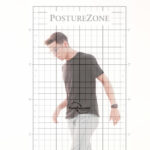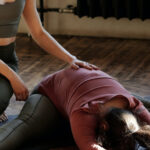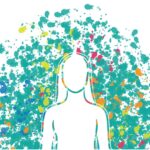The Impact of Prolonged Sitting on Posture and Musculoskeletal Health: Assessment as an Intervention Strategy
In the contemporary landscape of sedentary lifestyles, where long hours spent seated have become the norm, the repercussions on our posture and musculoskeletal health are too significant to ignore. As practitioners, navigating the complexities of these consequences is paramount, necessitating a profound understanding of the issue and the formulation of effective strategies for intervention. One indispensable tool in our arsenal is the art of posture assessment through photographs, leveraging the power of a posture grid to unravel the intricacies of our clients’ body alignment.
Exploring Posture Assessment through Photographs: The Power of the Posture Grid
In our pursuit of promoting optimal musculoskeletal health, the use of posture assessment pictures is a transformative practice. By incorporating a posture grid, a visual guide that delineates specific anatomical landmarks, we gain a nuanced understanding of our patients’ postural dynamics. This visual aid serves as a structured framework, allowing us to meticulously analyze any asymmetries, deviations, or imbalances present. What sets this approach apart is its ability to transcend traditional assessments, offering a dynamic snapshot of a person’s posture in various positions and activities. By capturing these images, we not only establish a baseline for evaluation but also empower people with a tangible representation of their postural habits. This visual feedback becomes a cornerstone for effective communication, fostering a collaborative journey towards improved musculoskeletal well-being.
The Role of Posture Assessment Images in Tailoring Interventions
Armed with a comprehensive understanding of our clients’ postural nuances, we embark on a journey of personalized intervention strategies. The visual cues obtained through posture assessment pictures guide the development of therapies, targeted exercises and other corrective measures. This tailored approach addresses specific areas of concern, facilitating a more efficient and impactful intervention. Moreover, the visual documentation of progress becomes a motivational tool for the people we work with, reinforcing the positive changes in their posture and encouraging continued commitment to corrective interventions.
Analyzing the Posture Findings:
Front and Back View Posture Pictures

When examining front and back view posture images, the vertical and horizontal lines play a crucial role in identifying asymmetry. Beginning from the bottom and moving upward in the PostureZone® method, practitioners can meticulously observe and numerically document various aspects using the grid:
- Assessing the lateral edges of the feet for discrepancies
- Comparing the lateral edges of the pelvis on the left and right sides
- Noting any shoulder height imbalances
- Counting the number of boxes visible between the arm and the body, especially when one upper extremity is held closer than the other
- Identifying any leftward deviation of the head in relation to the line extending from between the feet
Side View Posture Pictures

Shifting the focus to the top of the kinetic chain, clinicians examine the relationship between the head, torso, and feet—the pivotal point where the entire body finds balance. On lateral views, attention is directed to the alignment of the posterior margins of the feet, buttocks, shoulder blades, and head. For anterior/posterior views, the emphasis is on achieving symmetry between the left and right sides. Each PostureZone® on the grid approximates the center of masses that dictate balance in virtually any vertical posture.
Patient Communications
It’s crucial to remember that practitioners observe finer details compared to patients or clients. To facilitate effective communication, therapists and doctors can highlight significant concepts instead of delving into intricate details. Utilizing the measurements on the grid as talking points, practitioners can provide easily understandable explanations.
For instance:
- Align the center line from your feet to the top of your head. Does it align? If not, what does this indicate?
- Observe the height difference between the fingertips of your right and left hands.
- Note the level of your hips—your right hip at 3′ 2″ and your left at 3′ 5″—and its implications for body movement over time.
- Highlight the difference in shoulder heights (4′ 6″ on the right and 4′ 8″ on the left).

While there’s a wealth of detail, simplifying concepts resonates with individuals during their assessments. These straightforward explanations, coupled with visual evidence and measurements, foster understanding, trust, and ultimately compliance. Clients eagerly anticipate follow-up appointments as they seek tangible proof of improvement in their numbers on subsequent posture pictures.
In research settings, the posture assessment grid backdrop not only enhances the visual presentation but also enables the capture and communication of additional numeric details beyond the report and analysis findings.
Resources:

- Posture grids shown are available from BodyZone and PostureZone. These companies work with therapists, doctors, trainers and hospitals worldwide providing posture related supplies.
- 90-minute how-to on taking, analyzing and communicating posture pictures. See “Posture Pictures: >>>






















